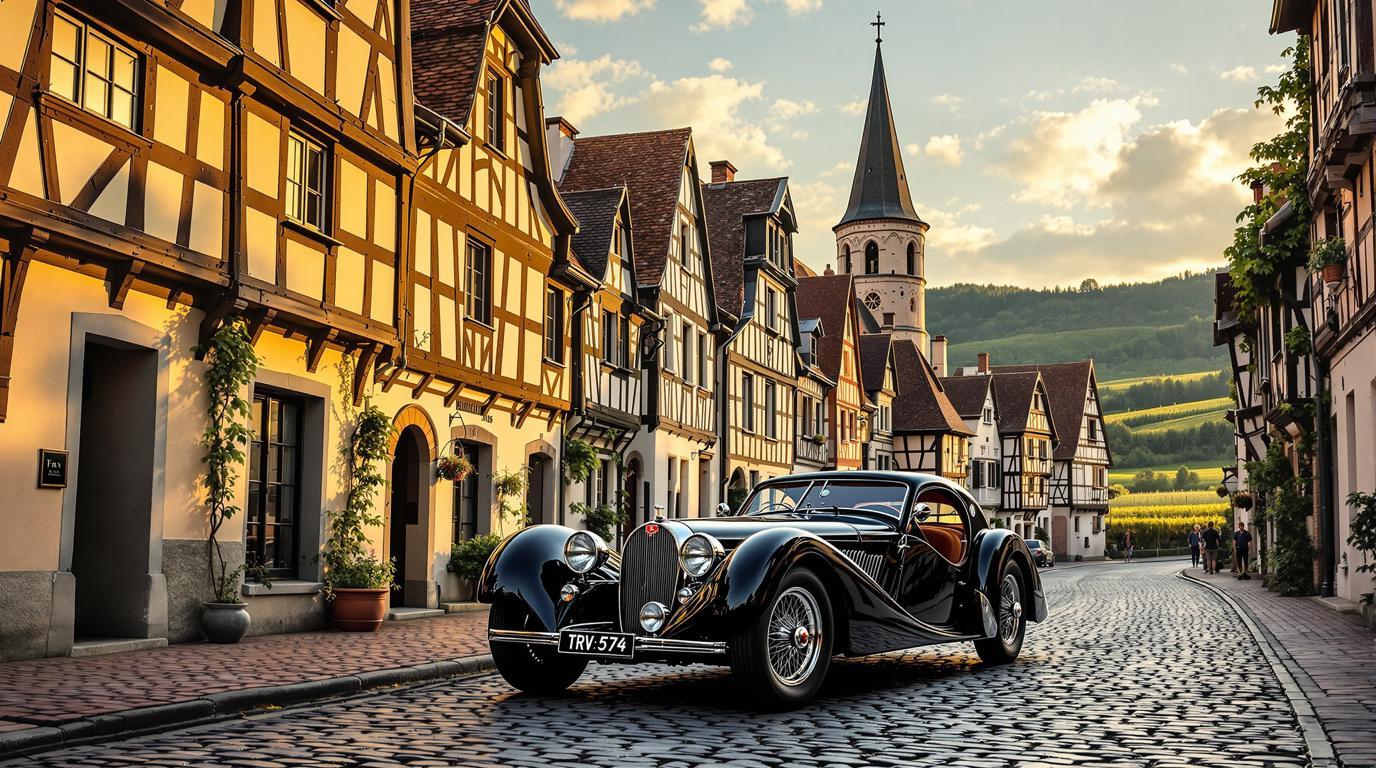Molsheim might be one of the most overlooked treasures in France’s famed Alsace region. This enchanting town sits at the gateway to the renowned Alsace Wine Route, yet somehow remains delightfully uncrowded compared to its famous neighbors. With its rich history dating back to the 9th century and a surprising connection to luxury automobiles, this medieval gem offers an authentic slice of Alsatian magic that most travelers miss entirely.
The Bugatti connection you never knew existed
Few visitors realize that sleepy Molsheim holds a significant place in automotive history. This unassuming town served as the birthplace of Bugatti automobiles when Ettore Bugatti established his factory here in 1909. Today, the Charterhouse Museum houses a stunning collection of these legendary vehicles, showcasing the town’s unexpected industrial heritage amidst its medieval architecture.
“Molsheim isn’t just a beautiful historic town – it’s where automotive artistry became legendary. Ettore Bugatti chose this place for its craftsmanship tradition, and that spirit still lives in every corner,” explains Jean Dupont, local historian and Bugatti enthusiast.
A medieval wonderland frozen in time
Walking through Molsheim feels like stepping into a fairytale. The town’s remarkably preserved medieval quarter features stunning half-timbered houses, winding cobblestone streets, and the impressive 17th-century Jesuit Church with its surprising Gothic-style architecture. La Metzig, a breathtaking Renaissance building housing the tourist office, stands as testament to the town’s historical prosperity and architectural ingenuity.
For history lovers seeking similar medieval charm without the crowds, this medieval French town with Richard the Lionheart’s tower offers another remarkable journey through time.
The wine route’s best-kept secret
While Colmar and Strasbourg draw massive crowds, Molsheim offers the quintessential Alsatian wine experience without the tourist throngs. Domaine Boehler produces exceptional white wines that rival their more famous counterparts, yet you’ll likely have the tasting room nearly to yourself. The surrounding vineyards provide spectacular hiking opportunities with panoramic views across the Rhine Valley.
Nature enthusiasts may also appreciate this hidden Provençal village with its stunning 42-meter waterfall for another off-the-beaten-path natural wonder.
A gastronomic paradise few travelers discover
Molsheim’s culinary scene combines traditional Alsatian flavors with modern innovation. Local specialties like tarte flambée (thin-crust pizza with crème fraîche, onions, and bacon) reach their pinnacle here. Restaurant La Metzig 1525 offers an elevated dining experience in a historic setting, where centuries-old recipes meet contemporary techniques.
“Our cooking honors tradition while embracing the present. We use ingredients our ancestors would recognize, prepared in ways that surprise even lifelong locals,” shares Marie Schneider, chef at a beloved local eatery.
Hidden gardens that rival royal estates
Just 7 kilometers from Molsheim lies the remarkable Jardin du Château de Kolbsheim, a masterpiece of landscape design that remains virtually unknown to international visitors. These meticulously maintained gardens showcase classic French formal design principles with distinctly Alsatian influences.
Garden enthusiasts might also appreciate this garden masterpiece near Paris or this hidden French landscape that rivals Versailles.
A village of flowing waters
Water features prominently in Molsheim’s urban landscape, from the bubbling Bruche River to the ornate Lions Fountain in the main square. These waterways once powered the town’s medieval industries and now provide a soothing soundtrack to visitors exploring the ancient streets.
Those fascinated by historic water features should also discover this hidden Provençal village with 14 ancient fountains.
Molsheim embodies everything travelers seek in Alsace—picturesque architecture, world-class wines, compelling history, and exceptional cuisine—without the overtourism affecting its more famous neighbors. Here, you can still experience an authentic encounter with one of Europe’s most distinctive cultural regions while feeling like you’ve discovered a secret that somehow escaped the attention of guidebooks and social media. When you visit, you’ll wonder how this remarkable town has remained so pristine and unspoiled in an age of overtourism.
